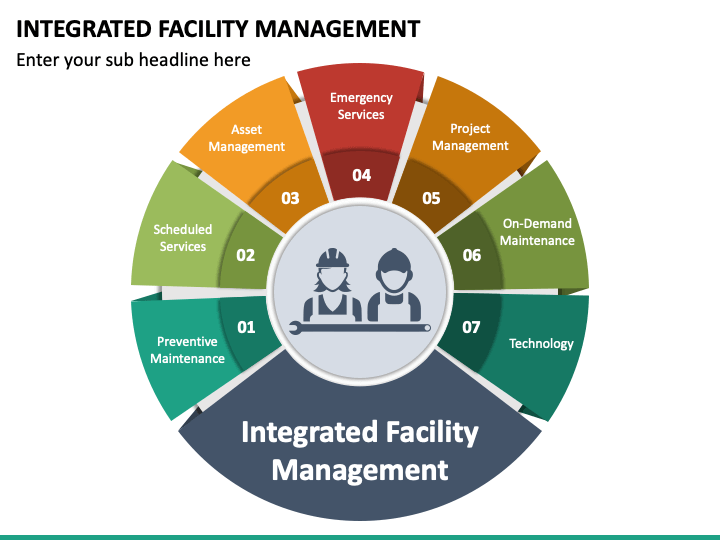The Importance of Total Facility Management in Ensuring Building Safety and Regulatory Compliance
The Importance of Total Facility Management in Ensuring Building Safety and Regulatory Compliance
Blog Article
How Total Facility Management Boosts Upkeep and Operations
Total Facility Management (TFM) stands for a transformative change in how companies come close to upkeep and procedures. By leveraging data-driven methods and incorporated technology, TFM not just anticipates and alleviates potential concerns yet additionally maximizes resource allowance and improves efficiency. The ramifications of adopting such an extensive framework extend past plain performance; they discuss sustainability and lasting property conservation. As we discover the multifaceted benefits of TFM, one may ask yourself how these practices can be tailored to address distinct functional obstacles.
Boosted Maintenance Methods
Improved Upkeep Techniques are important for optimizing the efficiency and longevity of facilitiess. These methods encompass a methodical approach to upkeep that stresses positive measures, anticipating analytics, and condition-based surveillance. By applying such strategies, companies can successfully decrease unintended downtimes and decrease operational disruptions.
One crucial part of enhanced maintenance is making use of data-driven decision-making tools. These devices permit facility managers to examine historic efficiency information, identify patterns, and forecast possible failings prior to they take place. This predictive maintenance method not just expands the life cycle of devices but likewise enhances safety and conformity requirements.
Equipping and educating maintenance workers are similarly vital in implementing boosted strategies (Total Facility Management). Trained team can carry out routine inspections and address small problems prior to they escalate. Additionally, embracing a detailed property management system helps with monitoring of devices standing, maintenance history, and scheduling of safety nets
Streamlined Operational Workflows
Maximizing functional workflows is vital for the general effectiveness of facility management. By applying structured processes, organizations can reduce redundancies, reduce delays, and enhance productivity. A well-structured functional workflow allows facility managers to designate resources efficiently, making certain that jobs are finished in a timely way.
Using facilitiess management software can automate routine jobs such as job order management, inventory tracking, and scheduling. Clear interaction networks among group participants foster collaboration and liability, additionally enhancing operational performance.
Standardizing treatments is an additional essential part. Establishing finest practices assists make certain that all team member are lined up in their approach, decreasing the probability of mistakes and boosting service shipment. Routine training and updates on operations procedures also play an important duty in keeping uniformity and effectiveness.
Eventually, structured functional workflows add to a much more receptive facility management system, enabling companies to focus on strategic efforts instead of being bogged down by management burdens. By prioritizing performance, facility supervisors can considerably improve the overall performance of their procedures.
Proactive Concern Resolution

Routine assessments and monitoring systems play a critical role in this procedure, enabling facility supervisors to gather data and prepare for potential failings. Furthermore, fostering open interaction networks among personnel urges the early reporting of concerns, further promoting prompt resolutions.
Applying a detailed facility management software application can improve the monitoring of upkeep tasks and problem coverage, giving beneficial understandings into repeating troubles and their origin creates. This data-driven technique enables educated decision-making and prioritization of sources.
Inevitably, positive issue resolution not just preserves the honesty of facility procedures but also improves staff member contentment and security. By purchasing approaches that concentrate on prevention, organizations can produce a much more effective and durable functional setting, establishing a solid foundation for future development and success.
Cost Efficiency and Source Management
Exactly how can organizations accomplish a balance in between price effectiveness and effective resource management in facility operations? The integration of total facility management (TFM) offers a critical structure that enhances economic performance while enhancing resource allocation. By settling services, organizations can enhance operations, lower redundancies, and utilize economic situations of range.
Reliable source management begins with a thorough evaluation of existing assets and functional processes. Using data analytics, organizations can recognize underutilized resources and address inadequacies. This enlightened method enables the application of targeted maintenance schedules, consequently lengthening possession life and reducing unplanned downtime.

Training and advancement of facility management workers further improve cost performance by furnishing them with the abilities required to take care of resources judiciously. Inevitably, by embracing an all natural method to facility management, organizations can accomplish considerable expense savings while making sure that operational efficiency remains a top priority.
Sustainability and Environmental Effect
The assimilation of total facility management (TFM) not only enhances expense effectiveness yet additionally plays a crucial role in promoting sustainability and decreasing environmental influence. By taking on a holistic technique to facility procedures, TFM promotes the implementation of lasting techniques that reduce resource intake and waste generation.
One of the key components of TFM is the optimization of power usage. This consists of the fostering of energy-efficient modern technologies, regular maintenance of HVAC systems, and the use of smart structure management systems. These steps not just reduced energy prices yet also dramatically reduce greenhouse gas discharges.
In addition, TFM promotes using sustainable materials in facility upkeep and remodelling jobs. By prioritizing eco-friendly products and techniques, facilitiess can minimize their total ecological impact while fostering much healthier interior settings.

Conclusion
In final thought, Total Facility Management dramatically improves upkeep and operations with organized methods that emphasize anticipating analytics and condition-based monitoring. TFM advertises sustainable methods, ultimately leading to enhanced facility management results and a culture of constant renovation within organizations.
Total Facility Management (TFM) represents a transformative change in how companies approach maintenance and procedures. Utilizing facilitiess management software application can automate routine tasks such as work order management, supply tracking, and organizing.Exactly how can organizations accomplish a balance between expense efficiency and reliable resource management in facility procedures? The combination of total facility management (TFM) provides a calculated framework that boosts monetary performance while enhancing source appropriation.In conclusion, Total Facility Management considerably boosts upkeep and operations through methodical approaches that emphasize predictive analytics and condition-based tracking.
Report this page